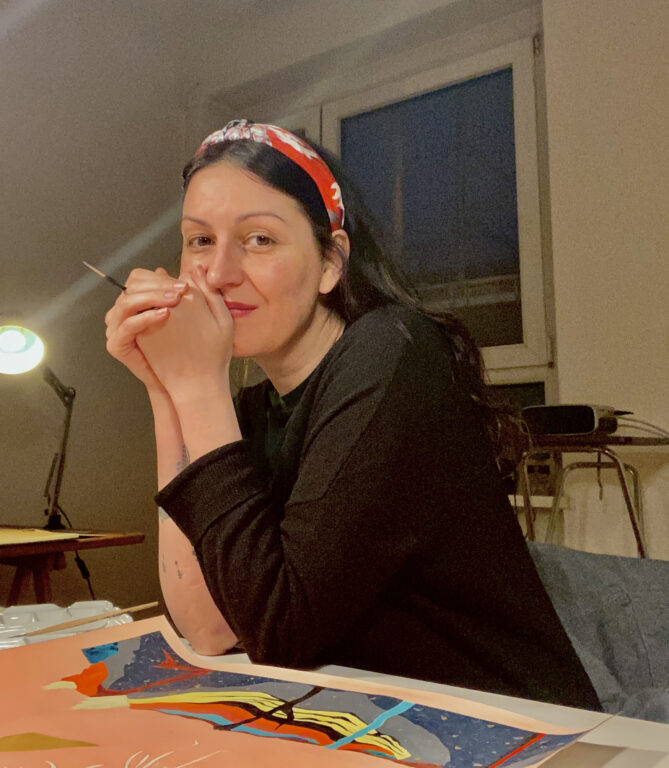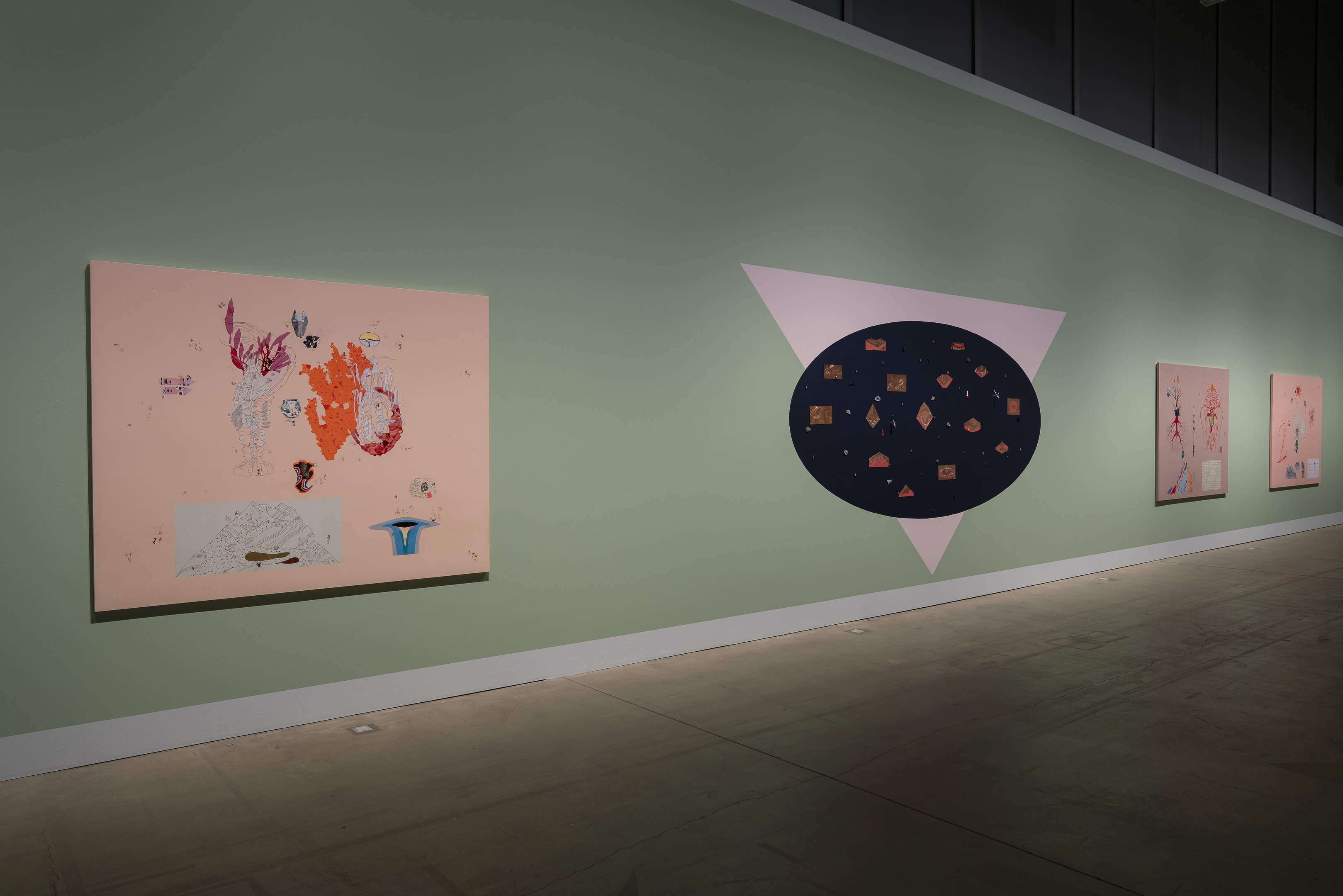
Regina de Miguel’s (b. 1977) interdisciplinary artistic practice is marked by a critical examination of the purported objectivity of scientific knowledge, utilizing it as a foundation for storytelling through ecofeminism theories, biophilosophy and speculative fiction.
The imagery she creates intertwines elements from science fiction, astronomy, botany, geology or telluric disciplines, yielding fantastical creatures and diverse hybridizations that transcend conventional dualisms such as mineral/vegetable, living/inert, alien/earthly, and microcosm/macrocosm.
Her collection of paintings and a mural in Helsinki Biennial present a cartography of a possible world inhabited by dreamlike manifestations and more-than-human characters.
Photo: Courtesy of the artist

Ofrenda (Offering), 2024
Mapa / friso del no ser 1-3 (Frieze of the non being 1–3), 2023-24
Artwork location: HAM Helsinki Art Museum
The installation comprises several bodies of work, from which a series of paintings and a mural will be on display in HAM’s south gallery. In her distinctively poetic language, de Miguel presents a cosmology permeated by concepts of repair and refuge in the face of fragility. The artist expands her imaginary in her mural painting, which presents a cartography of a possible world inhabited by dreamlike manifestations and more-than-human characters. Notably, the mural features plates or technological vestiges that emerge from the painting, resembling technofossils that reveal inscriptions of an imagined language. These technographies are suggestive of paleographic frescoes from a conceivable future era.
Microbes, mollusks, bacteria, corals, fungi, flowers, insects, phantoms, and mycorrhizae are but a few of the myriad life forms that populate the communities beyond the human in de Miguel’s work.
Through her own unique language, she constructs tales of oniric pluriverses supported by vibrant matter and multispecies organisms that evoke future memories and ancestral endosymbiosis. The works explore themes of interdependence and ecocentric coexistence while fostering relationships of empathy and alternate modalities of sensing beyond the human, ultimately appealing to a post-anthropocentric collective consciousness or to another planet – one that is dextractivized and post-fossil.
The production is supported in part by a grant from Acción Cultural Española (AC/E), a state agency; Catapulta. A Launchpad for Contemporary Spanish Art and Embassy of Spain in Finland.